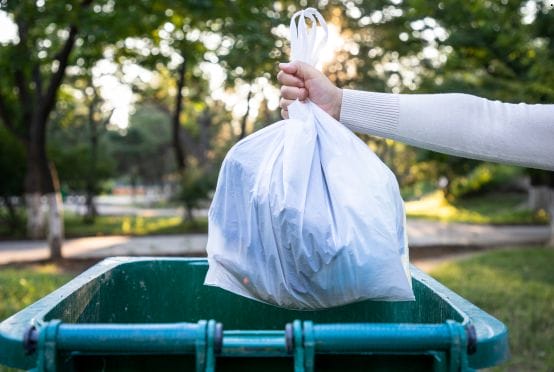Trash bags vary in size to suit diverse needs and bin types. Choosing the correct size enhances waste disposal efficiency. Exploring tradeoffs and challenges in size selection is crucial. It’s vital to consider the impact when deciding on the Trash Bag Size Chart to ensure effective waste management.
Trash Bag Size Chart
| Trash Can Diameter (inches) | Trash Can Height (inches) | Bag Width (inches) | Bag Height (inches) | Capacity (gallons) |
| 10 | 20 | 31.4 | 30 | 10-15 |
| 12 | 24 | 37.68 | 34 | 15-20 |
| 15 | 24 | 47.1 | 34 | 20-25 |
| 18 | 28 | 56.52 | 38 | 25-35 |
| 20 | 30 | 62.8 | 40 | 30-40 |
| 22 | 30 | 69.08 | 40 | 35-50 |
Standard Trash Bag Sizes
Standard trash bags are versatile and ideal for everyday kitchen use and general household waste. They come in various sizes, such as 13-gallon, 30-gallon, and 55-gallon options, each catering to different bin capacities. Choosing the right size involves balancing factors like waste volume and bin dimensions.
While larger bags accommodate more waste, they may be bulky for smaller bins. Conversely, smaller bags may require more frequent changes but fit compact bins perfectly. It’s essential to consider these factors to optimize waste management and minimize environmental impact.

Large Trash Bag Sizes
For outdoor cleanup and large-scale waste disposal, larger trash bags are essential. Sizes like 60-gallon and 95-gallon cater to extensive needs, including handling yard waste, construction debris, and industrial refuse. Choosing the right size involves balancing capacity with practicality—larger bags offer convenience for heavy-duty tasks but may be excessive for everyday use or smaller spaces.
It’s crucial to consider these factors to ensure efficient waste management and minimize environmental impact.
Small Trash Bag Sizes
In smaller spaces like bathrooms and offices, compact trash bags provide convenience and efficiency. Sizes such as 4-gallon and 8-gallon are tailored for these settings, accommodating light waste volumes effectively. They are ideal for disposing of paper waste, food wrappers, and other small items commonly found in these environments.
However, their smaller size means more frequent changes may be necessary, which can impact overall waste management efficiency. Balancing size with frequency of use is key to optimizing waste disposal practices and reducing environmental footprint.
Specialty Trash Bag Sizes
Specialty trash bags offer tailored solutions for recycling and managing odors. Sizes like 33-gallon recycling bags, compostable bags, and scented bags serve distinct purposes in waste management. Recycling bags facilitate sorting and disposal of recyclable materials efficiently, reducing contamination. Compostable bags support eco-friendly waste disposal practices by breaking down naturally.
Scented bags help mask unpleasant odors, enhancing indoor environment quality. Choosing the right specialty bag involves considering specific waste disposal needs and environmental impacts, ensuring effective and responsible waste management.
Choosing the Right Trash Bag Size
To ensure efficient waste management, consider these factors when choosing the right trash bag size. Bin dimensions, daily waste volume, and specific usage scenarios play crucial roles in determining the appropriate size. Larger bins require correspondingly larger bags to maximize capacity without overflow, while smaller bins benefit from smaller bags to prevent underutilization.
Flexibility in bag size selection allows adaptation to varying waste volumes and types. Environmental considerations, such as using compostable or recycled-content bags, further enhance sustainability efforts. Balancing these factors ensures effective waste disposal while minimizing environmental impact.
Conclusion
In conclusion, selecting the right trash bag size is crucial for optimizing waste management efficiency. By using the provided size chart, readers can make informed decisions tailored to their specific needs and environmental goals. Considerations of capacity, convenience, and sustainability ensure effective waste disposal practices.
FAQs
What size trash bag should I use for a standard kitchen bin?
Answer: For a typical kitchen bin, a 13-gallon trash bag is commonly used. It accommodates daily kitchen waste without being too bulky or underfilled.
How do I know if a trash bag will fit my bin?
Answer: Measure your bin’s dimensions (height, width, and depth) and compare them with the dimensions listed on the trash bag packaging or size chart. This ensures a proper fit.
Are larger trash bags more environmentally friendly than smaller ones?
Answer: It depends on usage. Larger bags can reduce plastic waste per volume of trash disposed but may be excessive for small amounts of waste. Opting for compostable or recycled-content bags can also improve sustainability.
What are the benefits of using scented trash bags?
Answer: Scented bags help mask unpleasant odors from trash, making them ideal for indoor use in kitchens and bathrooms. They contribute to a fresher-smelling environment.
Can I use any trash bag for recycling?
Answer: It’s best to use designated recycling bags or clear bags for recycling to ensure proper sorting and processing of recyclable materials. Check local recycling guidelines for specific requirements.